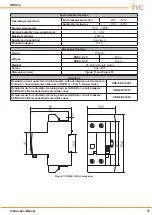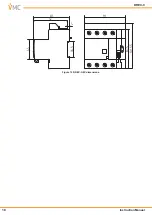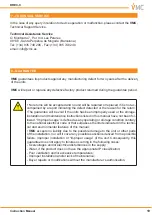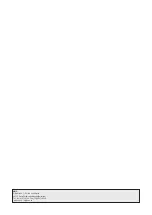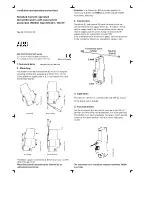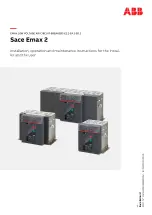
The
DREC-C
allows one mode of
automatic reclosing:
-
Reclosing
by insulation
, the device does not reclose until the leakage has disap-
peared.
4�4�2�1�- Reclosing by insulation
Following a time delay after a disconnection due to an RCCB trip, the
DREC-C
makes a meas
-
urement to check whether there is a leakage current. If there is none it begins to reclose.
The
DREC-C
attempts a maximum of 3 measurements to check the leakage current; following
this the unit stays locked and does not automatically reclose.
If the time between a reclosure and the next trip is greater than the restart time, the reclosing
attempts start over at zero.
The delay and restart times depend on the number of attempts the reclosing device has made,
Table 5: Delay and Restart Times�
Reclosures
1
2
3
Delay
Restart
Delay
Restart
Delay
Restart
<3 sec.
10 sec.
20 sec.
20 sec.
180 sec.
60 sec.
The leakage current will be supervised by measuring the resistance downstream of the tripped
RCCB.
4�4�2�2�- Restarting the reclosing system meter
There are two ways to restart the internal reclosing system meter:
-
Manually
, by moving the mode selector switch from ON to OFF position and back to
ON.
-
Automatically
, when the restart time elapses after the last reclosing without tripping
again.
4�4�2�3�- Restart in case of blocking
In case of blocking of the device, the start-up sequence is:
1�-
Check installation.
2�-
Put the mode selector switch in Manual Mode (OFF).
3�-
Lift the RCCB cover.
4�-
Put the RCCB contact in ON mode.
5�-
Lower the RCCB cover.
6�-
Put the mode selector switch in Manual mode (ON).
Note:
The switch has an M2 hole where you can attach a seal or a padlock to block access to
the RCCB and any other attempts at manual reclosing (
).
14
DREC-C
Instruction Manual

















